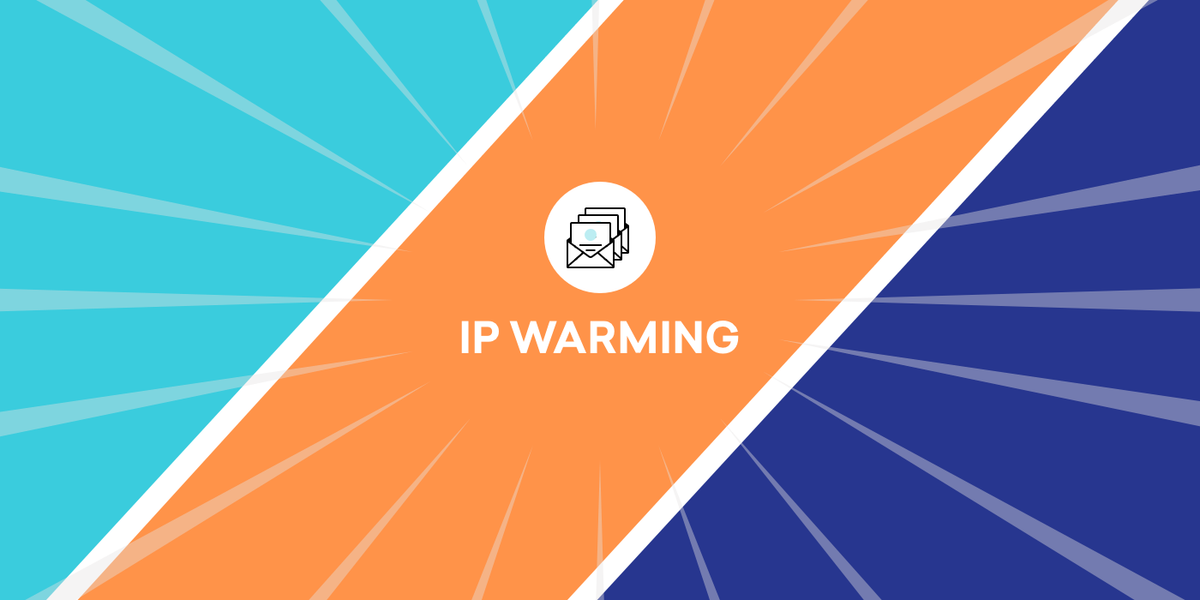Email Must-Knows: Get the Scoop on IP Warming
Published on September 06, 2019/Last edited on September 06, 2019/5 min read


Team Braze
When brands send emails to their customers, there are a lot of different things they might be looking to accomplish. Maybe it’s letting a user know about an upcoming sale. Maybe they’re delivering a much-needed password-reset link. Maybe they’re alerting their audience to a change in their privacy policy. But no matter what they’re looking to accomplish, there’s one goal that every brand has in common when it comes to their emails—namely, ensuring that they actually end up in the intended recipients’ inboxes.
There’s an art to email deliverability. To achieve it, you and your team need to master a number of key concepts. One of the most important? IP warming.
Brands that try to go from zero to 60 when it comes to email volume often find themselves hitting a wall. To successfully reach a massive audience using this channel, marketers need to add email volume gradually for each internet service provider (ISP). You can’t just send 20,000 emails a day right off the bat, or your messages will end up getting marked as spam. You don’t need to be a marketing genius to know that’s a subpar outcome!
There’s no iron-clad, fool-proof way to carry out an IP warming program, but there are some key best practices that can help you increase your brand’s odds, as well as some metrics that can help you identify potential trouble spots. The major ones are:
1. Figure out who your brand’s most-engaged recipients are
The ISPs who power the inboxes you’re trying to get your emails into want to see that you’re sending messages that recipients actually want to receive. So when you’re getting ready to kick off an IP warming program, it’s wise to identify the members of your audience who are more likely to open the emails you send, click through links, reply to them, or forward them along to others. By identifying this segment of highly-engaged users, you can show strong engagement with your emails right from the start and reduce the chances that your outreach is flagged as unwanted.
2. Determine what your most engaging content is
Sending to the right people is important, but it’s also important to serve up message content that they’re likely to respond to. After all, even a brand loyalist can find themselves clicking past when the email you send has a weak subject line or a lackluster CTA. Look at previous messaging—both in your email program, if you’ve sent marketing emails before, and in other messaging channels like push notifications—to identify topics and approaches that have worked particularly well and think about how to retrofit them to work in your current context.
3. Begin sending small amounts of email
If your brand has never sent marketing emails before—or if you’re rebuilding after seeing your email reputation take a hit—it’s important to start small. Showcasing to ISPs that you send email that recipients want and take action on is more important than sending emails to a lot of people when you’re kicking off an IP warming program, so focus first on delivering small, incremental sends of high-quality messages to highly-engaged people.
4. Gradually increase your email sends until you reach your target volume
Once you have an audience of users who are steadily engaging with your emails, it’s time to think about ramping up your sends—but you’re going to want to do it slowly, with an eye toward the total number of emails that you’re looking to send out post-warming. This often takes 4–6 weeks, but can take even longer depending on your brand’s planned monthly email volume, frequency of mailings, and how clean your email list is.
5. Pay close attention to your email metrics
As you go through the IP warming process, it’s important to keep a watchful eye on your email metrics—especially your delivery rate, deferral rate, and open rates. Your delivery rate is important on a high level because it shows you how much of the email you’re sending is making it through the ISP gateway. Similarly, your deferral rate can give you insight into whether you’re sending mail too quickly to a given ISP, impacting deliverability. Finally, your open rates can be a canary in the coalmine for your email program. If you see your open rates drop significantly as you go through the warming process, that’s a strong signal that you may be landing in many of your recipients’ spam folders, rather than the inbox.
6. Dig into any ISP blocks
Sometimes a brand will find that their email send behavior has led an ISP to blacklist the email they’re sending from a given email domain or IP address. If that happens, many messages will automatically be sent to spam, even if a given recipient is highly engaged and wants to receive the message in question. If that happens, it’s important to learn more about the blocks affecting your deliverability—what are they based on? Are they reputational in nature—before proceeding, so you can both appeal to these ISPs to be removed from their blacklists and be confident you won’t find yourself in the same situation again.
Final Thoughts
Don’t underestimate email. Sure, it’s the oldest digital marketing channel out there. But it’s a channel that’s always evolving—and there are some key ways to succeed in modern email marketing. IP warming is just one of many methods that can help you craft a winning email strategy.
Want to learn more about how Braze can support exceptional email messaging experiences? Check out our Email Product Page!
Related Tags
Releated Content
View the Blog
A day in the life of a data scientist on the BrazeAIᵀᴹ forward-deployed engineering team

McKay Jensen

The new inbox reality: How iOS changes are reshaping email marketing

Aparna Prasad

Experience optimization: Turning data insights into better journeys
